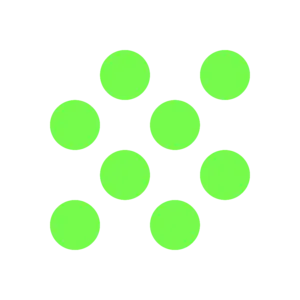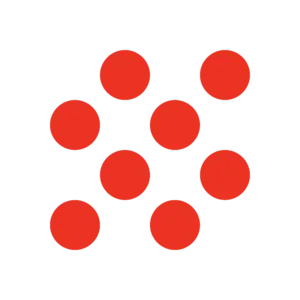-
E900 – Dimethylpolysiloxane
E900 (Dimethylpolysiloxane, PDMS) is a silicone-based antifoaming agent used in frying oils, soft drinks and processed foods. EFSA’s 2020 re-evaluation set an ADI of 17 mg/kg bw/day and found no safety concern at authorised uses,…
-
E451(i) – Pentasodium triphosphate
E451(i) (Pentasodium triphosphate) is a fast-absorbing inorganic phosphate widely used in processed meats and bakery products. High intake has been linked to kidney strain and vascular calcification in independent studies. We assign ORANGE – SOME…
-
E450(i) – Disodium diphosphate
Inorganic pyrophosphate produced by heating sodium phosphate salts. Widely used to stabilise texture and moisture in processed foods but is absorbed very rapidly in the body, which can stress kidney and cardiovascular systems in sensitive…
-
E262(ii) – Potassium Acetate
Analysis of potassium acetate (E262(ii)) including its preservative action, metabolic behaviour, toxicology data, and regulatory approval in the EU and worldwide.
-
E331 – Sodium and Potassium Citrates
A complete safety and regulatory overview of E331 sodium and potassium citrates, including how they’re used and why authorities consider them safe.
-
E500 – Sodium Carbonates (i, ii, iii)
Full scientific review of sodium carbonates (E500(i), E500(ii), E500(iii)), their uses, safety profile and regulatory status.
-
E262(i) – Sodium Acetate
Sodium acetate (E262(i)) is a heat-stable acidity regulator and preservative used in snacks, sauces and meat products. It is approved in the EU and US and considered safe at permitted use levels.
-
E160c – Paprika Extract (Capsanthin, Capsorubin)
Natural red-orange colorant extracted from paprika (Capsicum annuum). E160c – Paprika extract (Capsanthin, Capsorubin) is graded GREEN – SAFE due to its natural origin, strong antioxidant profile, and regulatory approval by EFSA and FDA.
-
E142 – Green S (Acid Green 50)
E142 – Green S (Acid Green 50) is a synthetic triarylmethane dye used for coloring canned peas, sauces, and sweets. Learn why it is banned in the US and Canada, allowed in the EU with…
-
E952 – Cyclamic Acid and Cyclamates
United States Food and Drug Administration does not approve cyclamates for food use. The European Union authorises E952 with maximum use levels -Acceptable Daily Intake (ADI) of 7 mg/kg body weight.
-
E150d – Sulfite Ammonia Caramel (Class IV)
E150d (Sulfite Ammonia Caramel) is the darkest caramel used widely in colas and sauces. It can form 4‑MeI and retain traces of sulfite, so we grade it ORANGE – SOME CONCERNS even though typical exposures…
-
E170 – Calcium carbonate
Calcium carbonate (E170) is a naturally occurring mineral used as a white food colorant and acidity regulator. It is considered safe by EFSA and FDA when used within regulated limits.
-
E150c – Ammonia Caramel (Class III)
E150c (Ammonia Caramel) uses ammonium compounds during manufacture and can form trace 4‑MeI. Regulators apply a lower ADI for this class, and we grade it ORANGE – SOME CONCERNS to reflect the by‑product issue.
-
E339 – Sodium phosphates
E339 (sodium phosphates) are acidity regulators, emulsifying salts and sequestrants. Learn how they are made, where they are allowed, typical uses, and why we grade them ORANGE – SOME CONCERNS based on EFSA’s ADI and…
-
E150b – Caustic Sulfite Caramel (Class II)
E150b (Caustic Sulfite Caramel) is made with sulfite compounds. It is safe for most consumers but may trigger intolerance in sulfite‑sensitive individuals. Our grading is ORANGE – SOME CONCERNS to reflect this practical risk.
-
E150a – Plain Caramel (Class I)
E150a (Plain Caramel) is produced by heating sugars without ammonium or sulfite compounds. It is chemically simpler, does not generate nitrogenous by‑products like 4‑MeI, and is considered safe at permitted uses. We grade it GREEN…
-
E321 – Butylated hydroxytoluene (BHT)
Butylated hydroxytoluene (E321, BHT) is a synthetic antioxidant used to stabilize fats and oils. EFSA set an ADI of 0.25 mg/kg bw/day in 2012. While permitted in the EU and US, mechanistic and high‑dose animal…
-
E320 – Butylated hydroxyanisole (BHA)
Butylated hydroxyanisole (E320, BHA) is a synthetic antioxidant used to protect fats and oils from rancidity. It is permitted in the EU with an ADI of 1.0 mg/kg bw/day and allowed in the US for…
-
E270 – Lactic acid
Lactic acid (E270) is a widely used acidity regulator and preservative. This summary explains its safety grade (GREEN), common uses, science and production, and where it is allowed.
-
E1422 – Acetylated Distarch Adipate
E1422 Acetylated Distarch Adipate is a modified starch thickener and stabiliser with a strong safety record. We grade it GREEN – SAFE.
Food additives database
Is It Safe? Side Effects & Regulation
Each entry explains what the additive is, where it is used, and its safety profile. You will also find details about possible side effects and how regulators in the EU, US, and other markets classify it. Simple grading system shows whether an additive is GREEN (Safe), ORANGE (Some Concerns), or RED (Unsafe/Banned).



